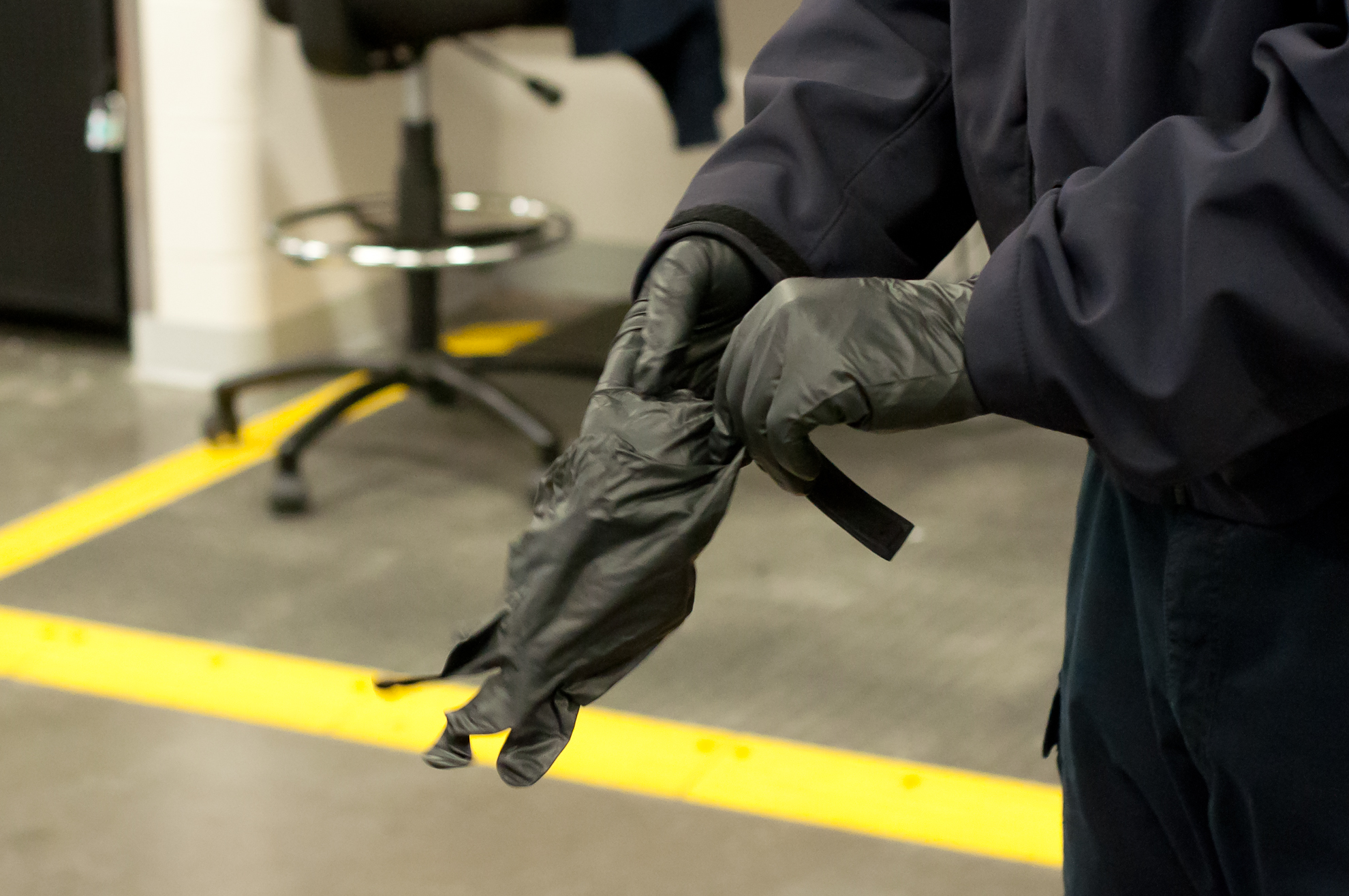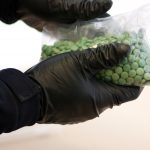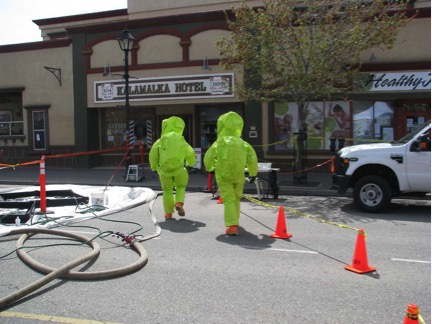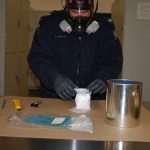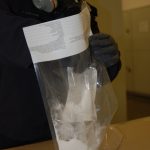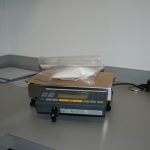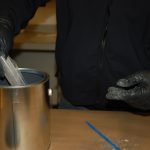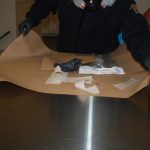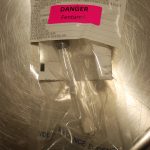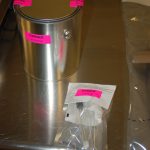Because any suspected drug may contain powerful opioids such as Fentanyl, handling illicit substances in any capacity is inherently hazardous. Proper handling of suspected drug samples is essential to keeping yourself, your co-workers, your family members and the general public safe.
- Be aware of your agency’s policy in relation to handling of any hazardous items, including Fentanyl, and adhere to that policy.
- Carry properly fitting personal protective equipment, (e.g. nitrile gloves, respiratory protection, etc.) and be trained how to use it, including how to take it off, as per your agency’s policy.
- Maintain an awareness for possible opioid exposure in all situations where suspected drugs may be involved.
- Use the risk assessment protocol below during the assessment of any operation where suspected drugs may be present.
- Know how to recognize opioid intoxication in yourself and others and how to administer naloxone, if approved by your agency’s policy.
- Seek assistance from subject matter experts when you have questions or concerns.

This resource is currently not covered under the website’s Creative Commons license.
RISK ASSESSMENT
Conduct a risk assessment for any scene where Fentanyl may be present:
- Man down situation where cause is unknown.
- Suspected drugs located on a person who uses drugs (user).
- Suspected drug located on a suspected drug trafficker.
- Location where pure Fentanyl may be present in large volumes, such as a tableting operation, drug load house, etc.
- In what form are the drugs? Tablet, powder, large volumes or single flap?
- What is the background history of the location where the drugs were found? (User, trafficker, etc.)
Note: The risk assessment must be constantly considered, changed as needed and communicated to ALL parties involved.
Should you have insufficient knowledge, training, or personal protective equipment available, supervisors MUST be advised immediately and if needed, subject matter experts must be contacted to keep employees and the public safe from potential exposure.
HANDLING GUIDELINES
- Do not ever taste, feel, or smell suspected drugs.
- Always wear nitrile gloves, never slash gloves alone.
- Treat any unknowns as if they contain, or are, Fentanyl.
- Do not rely on presumptive tests (Nik and NARK).
When arriving at the scene, it is important to take note of the following to prevent serious injury, harm or even death of First Responders:
- Is there any information to suggest the method of potential exposure or hazard such as drug paraphernalia or indications of large volumes of unknown powders?
- If identified or unknown, use personal protective equipment during the following low, medium and high risk response.
Bulletin:
Fentanyl, its analogues, and other potent opioids high risk to first responders

N95 Mask

RCMP Issue PC4 Gas Mask

Air Purifying Respirator (MSA Advantage 1000)
BOTTOM LINE
Treat all possible Fentanyl exhibits as Fentanyl until their analysis is confirmed.
Seek assistance as needed from subject matter experts to keep yourself, co-workers, family members and the general public safe.



